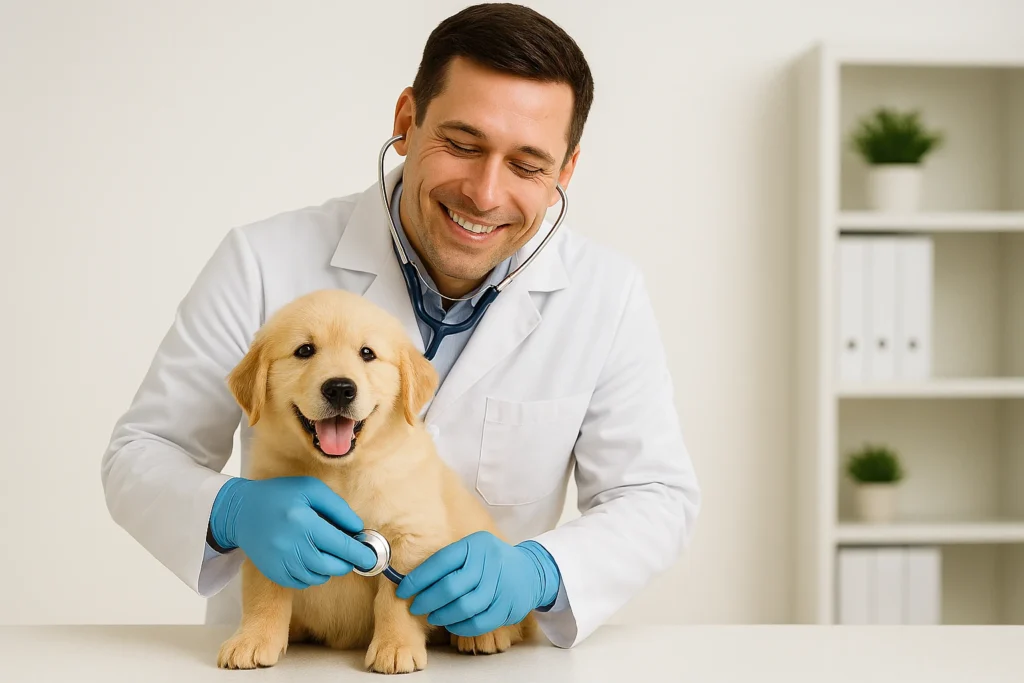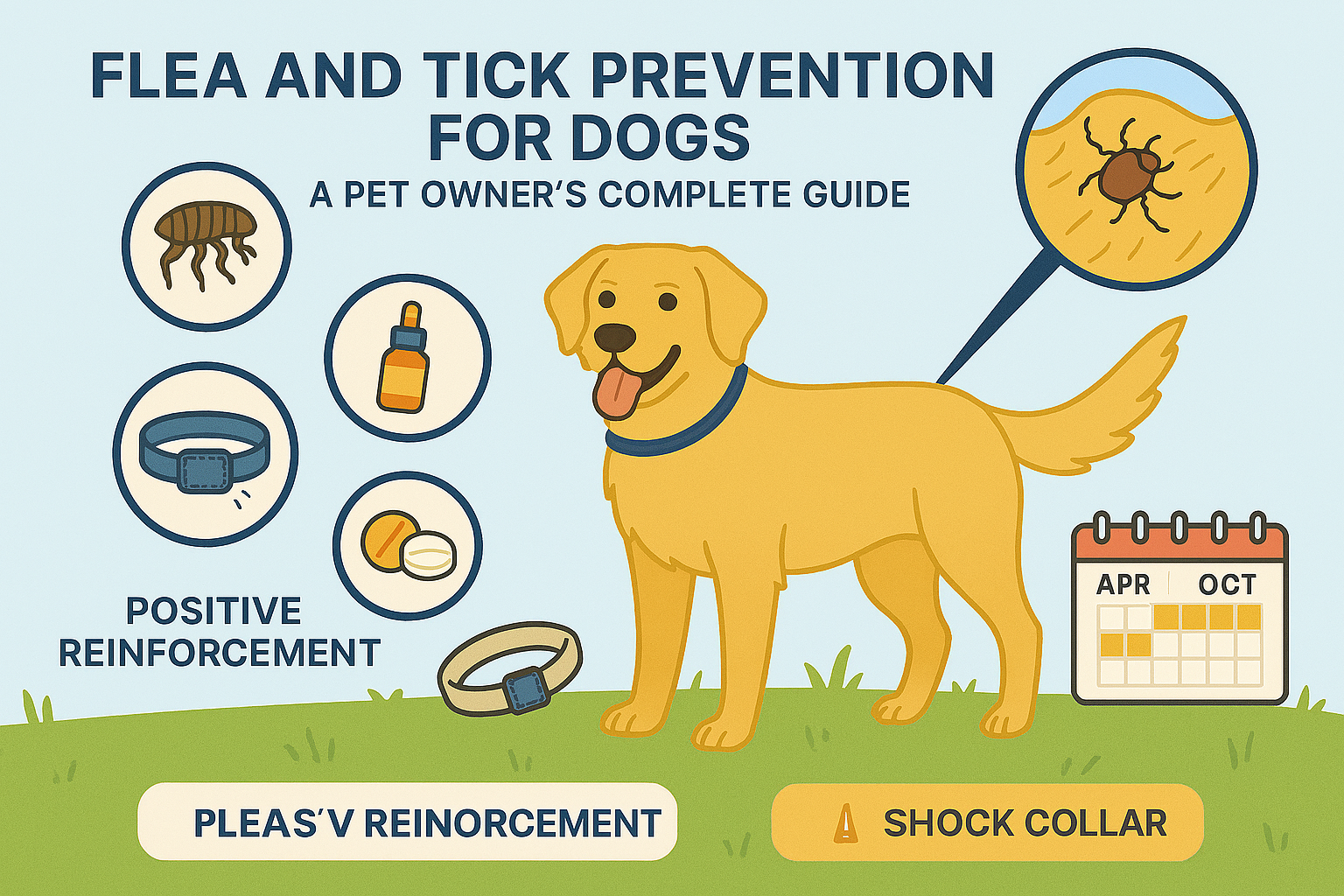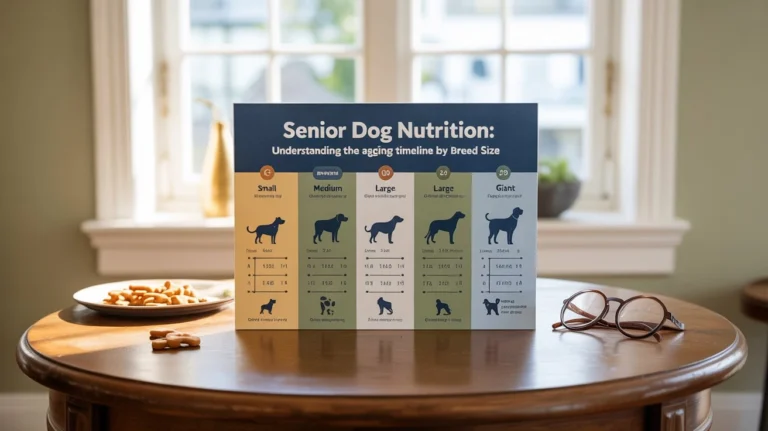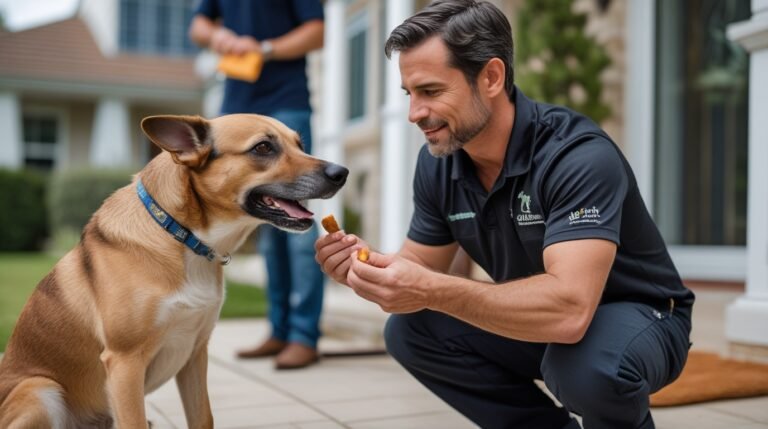Comprehensive Guide to Dog Health: From Puppy to Senior
70% of health issues are preventable with proper care
📋 Quick Navigation
Introduction: Your Dog’s Health Journey
Bringing a dog into your life is one of the most rewarding experiences you’ll ever have. That wagging tail, those excited greetings, and the unconditional love they provide can fill your days with joy. But along with that joy comes tremendous responsibility—the responsibility to protect and nurture your furry companion throughout their entire life.
As a dog owner, you’ve likely felt that overwhelming sense of responsibility. You want to do everything right, but with so much information available—some conflicting—it’s hard to know where to start. How do you ensure you’re making the best decisions for your dog’s health from their first day with you to their golden years?
This comprehensive dog health guide is designed to be your trusted companion on this journey. We’ll walk you through every stage of your dog’s life, providing evidence-based advice, practical checklists, and clear guidance on when to seek veterinary care. Whether you’re a new puppy parent or an experienced dog owner, this guide will empower you to make informed decisions that will help your beloved companion live a longer, healthier, and happier life.
💡 firsthand-experience:: The Night I Almost Lost My Golden Retriever
I’ll never forget the night my 6-month-old Golden Retriever, Max, suddenly became lethargic and refused to eat. As a new dog owner, I panicked. After rushing him to the emergency vet, we discovered he had ingested a foreign object that required immediate surgery. That terrifying experience taught me the importance of knowing what’s normal for your dog and recognizing warning signs early. It also inspired me to create this comprehensive guide to help other dog owners avoid similar scares through proactive health management.
📖 trust-builder:: Evidence-Based Information
This guide is developed using the latest veterinary research and guidelines from leading organizations including the American Veterinary Medical Association (AVMA), American Animal Hospital Association (AAHA), and the World Small Animal Veterinary Association (WSAVA). All recommendations are cross-referenced with multiple authoritative sources to ensure accuracy and reliability.
Part 1: The Puppy Stage (0-1 Year)
The puppy stage is a critical period of development that sets the foundation for your dog’s lifelong health. During this first year, your puppy undergoes rapid physical and behavioral changes, requiring specific care and attention to ensure they grow into a healthy, well-adjusted adult dog.
1.1 Puppy Vaccination Schedule
Vaccinations are crucial for protecting your puppy against serious and potentially fatal diseases. Following a proper vaccination schedule is one of the most important steps you can take to safeguard your puppy’s health.

Regular vet visits during the puppy stage are crucial for vaccinations and establishing a baseline for your dog's health.⭐ expert-tip:: Vaccination Safety
Dr. Sarah Johnson, DVM, advises: “While vaccinations are essential, avoid over-vaccination. Recent veterinary guidelines recommend titer testing for adult dogs to determine if booster shots are necessary. For puppies, stick to the core vaccine schedule and discuss non-core vaccines with your veterinarian based on your dog’s lifestyle and risk factors.”
1.2 Puppy Nutrition
Proper nutrition is fundamental to your puppy’s growth and development. Puppies have different nutritional needs than adult dogs, requiring food that supports their rapid growth while being gentle on their developing digestive systems.
- Choose puppy-specific food: Formulated with higher protein and fat content to support growth
- Feed multiple small meals: 3-4 times daily until 6 months, then 2 times daily
- Monitor growth rate: Puppies should grow steadily, not too rapidly
- Avoid overfeeding: Rapid growth can lead to skeletal problems in large breeds
- Provide fresh water: Always available and changed daily
1.3 Puppy Socialization and Training
The socialization window (3-16 weeks) is a critical period when puppies are most receptive to new experiences. Proper socialization during this time helps prevent behavioral issues and anxiety later in life.
- Expose to various environments: Different surfaces, sounds, and sights
- Introduce to different people: Various ages, appearances, and behaviors
- Safely meet other dogs: Only with fully vaccinated, friendly dogs
- Start basic training: Sit, stay, come, and leash manners
- Positive reinforcement only: Reward-based training builds confidence
1.4 Common Puppy Health Issues
Puppies are susceptible to several health issues that require prompt attention. Being able to recognize the signs early can make a significant difference in treatment outcomes.
🚨 When to Call the Vet Immediately
Contact your veterinarian immediately if your puppy shows any of these signs: persistent vomiting or diarrhea, lethargy, refusal to eat for more than 24 hours, difficulty breathing, pale gums, seizures, or unexplained bleeding. These symptoms can indicate serious conditions that require urgent attention.
Parvovirus
Parvovirus is a highly contagious and potentially fatal viral infection that primarily affects puppies. Symptoms include severe bloody diarrhea, vomiting, lethargy, and loss of appetite. Prevention through vaccination is critical, as treatment can be expensive and intensive.
Intestinal Parasites
Roundworms, hookworms, and other intestinal parasites are common in puppies. Regular deworming and fecal examinations are essential. Symptoms may include diarrhea, vomiting, a pot-bellied appearance, and poor growth.
1.5 First Vet Visit Checklist
Your puppy’s first veterinary visit sets the foundation for their lifelong healthcare. Here’s what to expect and what to bring:
- Bring previous health records: If available from breeder or shelter
- Fresh stool sample: For parasite testing
- List of questions: About feeding, behavior, and care
- Bring any medications: Your puppy may be taking
During this visit, your veterinarian will perform a comprehensive physical examination, discuss vaccination and deworming schedules, and address any concerns you may have. This is also an excellent opportunity to discuss spaying or neutering and microchipping.
Part 2: The Adult Stage (1-7 Years)
The adult stage is typically the healthiest period in your dog’s life. With proper care established during puppyhood, your adult dog should be energetic, active, and relatively free from major health issues. However, this doesn’t mean health care becomes any less important.
2.1 Annual Health Examinations
Annual veterinary check-ups are essential for maintaining your adult dog’s health. These visits allow your veterinarian to detect potential health issues early, often before they become serious problems.
- Comprehensive physical exam: Checking weight, temperature, heart, lungs, skin, coat, eyes, ears, mouth, and teeth
- Blood work: Annual blood tests can detect early signs of organ dysfunction
- Vaccination boosters: As recommended based on your dog’s lifestyle and risk factors
- Parasite prevention: Discussion of flea, tick, and heartworm prevention
- Dental assessment: Evaluation of dental health and professional cleaning recommendations
2.2 Nutrition and Weight Management
Proper nutrition during the adult years helps maintain optimal weight, supports organ function, and prevents obesity-related health issues. Adult dogs have different nutritional needs than puppies and seniors.
- Choose quality adult dog food: Appropriate for your dog’s size, breed, and activity level
- Measure portions carefully: Follow feeding guidelines but adjust based on your dog’s body condition
- Limit treats: Treats should not exceed 10% of daily caloric intake
- Monitor body condition: You should be able to feel but not see your dog’s ribs
- Adjust for activity level: Active dogs may need more calories than sedentary ones
⭐ expert-tip:: Weight Management
Dr. Michael Chen, Veterinary Nutritionist, explains: “Obesity is the most common nutritional disorder in dogs, affecting over 50% of adult dogs in the United States. Even a few extra pounds can significantly increase the risk of arthritis, diabetes, and heart disease. Use the body condition score system regularly and consult your veterinarian about the ideal weight for your dog’s breed and build.”
2.3 Exercise and Mental Stimulation
Adult dogs need regular physical exercise and mental stimulation to maintain their physical health and prevent behavioral issues. The amount and type of exercise needed varies by breed, size, and individual health status.
- Daily walks: At least 30 minutes twice daily for most adult dogs
- Breed-appropriate activities: Retrievers may enjoy swimming, while herding breeds may excel at agility
- Mental stimulation: Puzzle toys, training sessions, and nose work
- Social interaction: Playdates with other dogs or visits to dog parks
- Rest and recovery: Ensure adequate rest between activity sessions
2.4 Dental Care
Dental health is crucial for your adult dog’s overall wellbeing. Poor dental hygiene can lead to pain, tooth loss, and systemic infections that affect the heart, kidneys, and liver.
- Daily brushing: Use dog-specific toothpaste and a soft-bristled brush
- Dental chews and toys: Look for products with the VOHC Seal of Acceptance
- Professional cleanings: As recommended by your veterinarian, typically annually
- Monitor for problems: Bad breath, difficulty eating, or pawing at the mouth
2.5 Parasite Prevention
Adult dogs require ongoing protection against both external and internal parasites. Prevention is far easier and more cost-effective than treatment.
Part 3: The Senior Stage (7+ Years)
As dogs enter their senior years, typically around age 7 (earlier for larger breeds), their health needs change significantly. Senior dogs require more frequent veterinary care and adjustments to their diet, exercise routine, and living environment to maintain their quality of life.
3.1 Senior Health Care Schedule
Senior dogs benefit from more frequent veterinary visits to detect and manage age-related health issues early. Most veterinarians recommend semi-annual check-ups for senior dogs.
- Bi-annual examinations: Every 6 months instead of annually
- Comprehensive blood work: Twice yearly to monitor organ function
- Urinalysis: To check kidney function and detect urinary issues
- Blood pressure monitoring: Especially important for dogs with heart conditions
- Arthritis screening: Regular assessment for joint pain and mobility issues
3.2 Common Senior Health Issues
Senior dogs are prone to several health conditions that require special attention and management. Early detection and intervention can significantly improve your senior dog’s quality of life.
Arthritis and Joint Pain
Arthritis affects approximately 80% of dogs over age 8. Symptoms include stiffness, difficulty rising, reluctance to jump or climb stairs, and decreased activity. Management includes weight control, appropriate exercise, joint supplements, pain medication, and modifications to the home environment.
Cognitive Dysfunction
Similar to Alzheimer’s in humans, canine cognitive dysfunction affects many senior dogs. Signs include disorientation, changes in sleep patterns, decreased interaction, and loss of house training. Environmental enrichment, specific diets, and medications can help manage symptoms.
Organ Dysfunction
Kidney disease, liver disease, and heart conditions become more common in senior dogs. Regular blood work is essential for early detection, as these conditions often progress silently until they’re advanced. Dietary modifications and medications can help manage many of these conditions.
🚨 Senior Dog Emergency Signs
Seek immediate veterinary care if your senior dog shows: sudden weakness or collapse, difficulty breathing, pale or white gums, seizures, uncontrolled vomiting or diarrhea, significant changes in urination or thirst, severe pain, or sudden behavioral changes. Senior dogs can deteriorate quickly, so prompt attention is critical.
3.3 Senior Nutrition
Nutritional needs change significantly for senior dogs. Their metabolism slows, they may become less active, and they often develop specific health conditions that require dietary modifications.
- Senior-specific formulas: Typically lower in calories but higher in fiber
- Joint support supplements: Glucosamine, chondroitin, and omega-3 fatty acids
- Enhanced digestibility: To compensate for decreased digestive efficiency
- Specialized diets: For specific conditions like kidney disease or heart disease
- Smaller, more frequent meals: Easier on the digestive system
3.4 Exercise and Mobility Support
While senior dogs still need regular exercise, their capabilities and needs change. The focus shifts from high-intensity activity to maintaining mobility and muscle mass without causing pain or excessive fatigue.
- Gentle, regular walks: Shorter but more frequent walks
- Swimming: Excellent low-impact exercise for dogs with joint issues
- Therapeutic exercises: Simple range-of-motion exercises recommended by your veterinarian
- Mobility aids: Ramps, stairs, or harnesses for dogs with mobility issues
- Comfortable resting areas: Orthopedic beds in warm, draft-free locations
⭐ expert-tip:: Quality of Life Assessment
Dr. Emily Rodriguez, Geriatric Veterinary Specialist, recommends: “Regularly assess your senior dog’s quality of life using the HHHHHMM scale: Hurt, Hunger, Hydration, Hygiene, Happiness, Mobility, and More good days than bad. This simple assessment can help you make difficult decisions about your senior dog’s care and ensure they’re enjoying a good quality of life in their golden years.”
Part 4: Universal Health Essentials (For All Ages)
Certain aspects of dog health care remain important throughout your dog’s entire life. These universal health essentials form the foundation of your dog’s wellbeing, regardless of their age.
4.1 Spaying and Neutering
Spaying (for females) and neutering (for males) are surgical procedures that prevent reproduction and offer several health benefits. The optimal timing varies by breed and individual health factors.
- Health benefits: Reduced risk of certain cancers and infections
- Behavioral improvements: Reduced roaming, aggression, and marking behaviors
- Timing considerations: Traditionally done at 6 months, but recent research suggests waiting until larger breeds are more mature
- Post-operative care: Restricted activity for 10-14 days, monitoring incision site
4.2 Microchipping and Identification
Proper identification is crucial for reuniting with your dog if they become lost. Microchipping provides permanent identification that can’t be lost or removed like collars and tags.
- Microchipping: A tiny chip implanted under the skin, registered with your contact information
- ID tags: Should include your phone number and possibly address
- Registration: Keep your microchip registration information current
- Annual verification: Have your veterinarian scan the microchip annually to ensure it’s functioning
4.3 Grooming and Skin Care
Regular grooming is essential for your dog’s comfort and health. It provides an opportunity to check for skin issues, parasites, and unusual lumps or bumps.
- Breed-specific grooming: Frequency and methods vary significantly by coat type
- Nail trimming: Typically every 2-4 weeks, depending on growth rate
- Ear cleaning: Especially important for dogs with floppy ears
- Skin checks: Look for rashes, hot spots, parasites, or unusual growths
- Seasonal considerations: Extra attention during shedding seasons
4.4 How to Perform a Weekly At-Home Health Check
Regular at-home health checks between veterinary visits can help you detect potential problems early. This simple 5-minute routine should become part of your weekly care regimen.
- Eyes: Check for redness, discharge, cloudiness, or changes in pupil size
- Ears: Look for redness, odor, discharge, or excessive wax buildup
- Mouth and gums: Check for redness, swelling, bleeding, or bad breath
- Skin and coat: Look for parasites, rashes, lumps, or changes in coat condition
- Nails and paw pads: Check for overgrown nails, cracks, or foreign objects
- Weight and body condition: Monitor for sudden weight changes
- Mobility: Watch for stiffness, limping, or difficulty rising
4.5 Emergency Preparedness
Being prepared for emergencies can save your dog’s life. Every dog owner should have an emergency plan and know the location of the nearest 24-hour emergency veterinary clinic.
- Emergency contact information: Posted visibly and saved in your phone
- First aid kit: Specifically designed for dogs with items like gauze, adhesive tape, scissors, and hydrogen peroxide
- Transport plan: Know how you’ll transport your dog to the emergency clinic
- Financial preparation: Consider pet insurance or an emergency fund
- Basic first aid knowledge: Know how to handle common emergencies like choking or bleeding
Frequently Asked Questions
Q1: How often should I take my dog to the vet?
For adult dogs (1-7 years), annual check-ups are typically sufficient. Puppies require more frequent visits for vaccinations and senior dogs (7+ years) benefit from bi-annual examinations to catch age-related issues early.
Q2: What vaccinations does my dog really need?
Core vaccines recommended for all dogs include DHPP (Distemper, Hepatitis, Parvovirus, Parainfluenza) and Rabies. Non-core vaccines like Bordetella, Lyme, and Leptospirosis should be discussed with your veterinarian based on your dog’s lifestyle and geographic location.
Q3: How can I tell if my dog is overweight?
You should be able to feel your dog’s ribs without pressing hard, and see a defined waist when viewed from above. Your veterinarian can assess your dog’s body condition score and provide specific weight management recommendations.
Q4: Is pet insurance worth it?
Pet insurance can be valuable, especially for breeds prone to hereditary conditions or for owners who want financial protection against unexpected accidents or illnesses. Compare plans carefully, considering coverage limits, exclusions, and reimbursement percentages.
Q5: When is it time to consider euthanasia for my senior dog?
This is a deeply personal decision that should be made in consultation with your veterinarian. Consider your dog’s quality of life, pain levels, ability to enjoy daily activities, and whether they’re having more good days than bad days. Your veterinarian can help you assess these factors objectively.
Conclusion: Your Lifelong Commitment to Your Dog’s Health
Caring for your dog’s health is a journey that spans their entire lifetime. From the moment you bring them home as a puppy to their final days as a senior companion, your commitment to their wellbeing ensures they live the longest, healthiest, and happiest life possible.
This comprehensive dog health guide provides the foundation for making informed decisions about your dog’s care at every stage. Remember that every dog is unique, and while this guide offers general recommendations, your veterinarian remains your most valuable resource for personalized advice.
By staying proactive about preventive care, recognizing early warning signs, and seeking veterinary guidance when needed, you’re giving your dog the greatest gift possible—a lifetime of health and happiness. The bond you share with your dog is special, and through dedicated health care, you can ensure that bond lasts for many years to come.
🎯 Download Your Free Dog Health Checklist
Get our comprehensive, printable Dog Health Checklist to track your pet’s care throughout every life stage.
- ✓ Puppy vaccination tracker
- ✓ Monthly health check reminders
- ✓ Senior dog monitoring guide
- ✓ Emergency preparedness checklist
💬 Enter your email below to receive your free PDF instantly!
Remember, the information in this guide is intended to supplement, not replace, professional veterinary care. Always consult with your veterinarian about your dog’s specific health needs and concerns.
Disclosure: Some links in this article may be affiliate links, which means we may earn a small commission at no additional cost to you if you make a purchase through these links. We only recommend products and services we trust and believe will be valuable to our readers.




